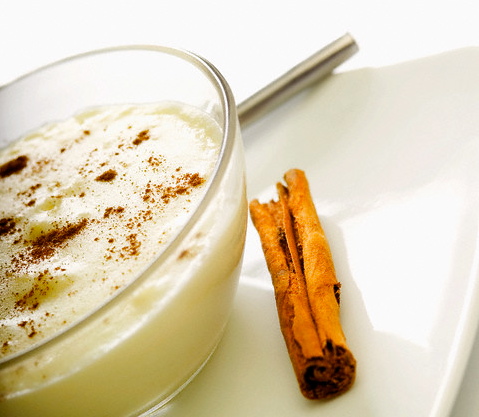
Food – any type of food!..seems to taste better eaten in good company or savored outdoors. Being Italian, I love meals with family gathered around the diningroom table, however I remember (with a little nostalgia) those cold winter afternoons on my way back home from school. Walking past bundled up street vendors that would sell you crackling castagne, chestnuts, in a newspaper cone. There’s just nothing quite like the taste of freshly roasted chestnuts on a cold afternoon walking through Milan no less!
Similarly, the dish that we are going to talk about this week, shared a similar humble beginning once served in urban streets in newspapers, and later became an iconic British dish that restaurants all around the world that try to replicate the light yet flavorful, crispiness of Fish and Chips!
Charles Dickens is one of the first writers to mention the existence of a “fried fish warehouse” in his masterpiece Oliver Twist, which makes us think that fish and chips must go back to at least the 19th century. If we want to pin down the year of the very first fish and chips shops opening, records tell us that it is attributed to Joseph Malin in 1860 in London. It is during that time in fact that Great Britain started developing railways to facilitate transportation of material and food, including fish from the North Sea. If we still have this dish today it’s because Fish and Chips is one of the truly traditional British dishes that survived the World War II when rationing affected most of the culinary traditions.
The secret to make a very good Fish and Chips is to use a batter made of flour, water and a little bit of baking soda which adds that beautiful golden color once fried Beer and milk batter can also substitute water: if beer is preferred you can decide whether to use a lager or a bitter beer which will also change the color from golden to an orange-brown.
Frying can be done with beef dripping or lard, or vegetable oil.
Although in the United States Fish and Chips is usually served with coleslaw, ketchup and tartar sauce, the original British dish is served with salt, pepper and a few drizzles of vinegar. Instead of coleslaw, mushy peas are often served aside.
If you are in London, we recommend making a stop a the Sea Shell restaurant, where fish and chips has been one of the main popular dishes for over 40 years. But if, like us, you live in LA and the surrounding areas, we suggest you check out the Fat Cow at the Grove, owned by Chef Gordon Ramsey. Here Fish and Chips is served traditional-style in a casual, modernly rustic and welcoming environment. If your feelin fancy , we recommend another Chef Ramsey’s restaurant, the London West Hollywood Hotel. The London After Five bar menu offers a California-style reinterpreted fish and chips served with tartar sauce and English pea puree.
Ingredients: (serves 4)
sunflower oil, for deep-frying
½ teaspoon sea salt
1 teaspoon freshly ground black pepper
225 g white fish fillets, from sustainable sources, pinboned, ask your fishmonger
225 g flour, plus extra for dusting
285 ml beer, cold
3 heaped teaspoons baking powder
900 g potatoes, peeled and sliced into chips
For the mushy peas
1 knob butter
4 handfuls podded peas
1 small handful fresh mint, leaves picked and chopped
1 squeeze lemon juice
sea salt
freshly ground black pepper
To make your mushy peas, put the butter in a pan with the peas and the chopped mint. Put a lid on top and simmer for about 10 minutes. Add a squeeze of lemon juice and season with salt and pepper. You can either mush the peas up in a food processor, or you can mash them by hand until they are stodgy, thick and perfect for dipping your fish into. Keep them warm while you cook your fish and chips.
Pour the sunflower oil into your deep fat fryer or a large frying pan and heat it to 190ºC/375ºF. Mix the salt and pepper together and season the fish fillets on both sides. This will help to remove any excess water, making the fish really meaty. Whisk the flour, beer and baking powder together until nice and shiny. The texture should be like semi-whipped double cream (i.e. it should stick to whatever you’re coating). Dust each fish fillet in a little of the extra flour, then dip into the batter and allow any excess to drip off. Holding one end, lower the fish into the oil one by one, carefully so you don’t get splashed – it will depend on the size of your fryer how many fish you can do at once. Cook for 4 minutes or so, until the batter is golden and crisp.
Meanwhile, parboil your chips in salted boiling water for about 4 or 5 minutes until softened but still retaining their shape, then drain them in a colander and leave to steam completely dry. When all the moisture has disappeared, fry them in the oil that the fish were cooked in at 180ºC/350ºF until golden and crisp. While the chips are frying, you can place the fish on a baking tray and put them in the oven for a few minutes at 180ºC/350ºF/gas 4 to finish cooking. This way they will stay crisp while you finish off the chips. When they are done, drain them on kitchen paper, season with salt, and serve with the fish and mushy peas.
Enjoy!~
Recipe by Jamie Oliver
Image © Morgans, Gareth










